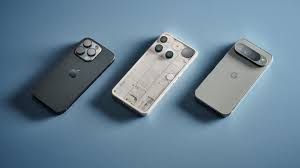Every year, thousands of children are rushed to emergency rooms due to accidental poisoning from household cleaning supplies. As a parent, safeguarding your home against these hazards is critical to ensuring your child’s safety. This article will guide you through practical steps to secure cleaning products, choose baby-safe alternatives, and create a toxin-free environment.
You’ll learn how to childproof storage areas, identify harmful ingredients, and implement emergency protocols. Whether you’re a new parent or looking to update your safety measures, these strategies will help reduce risks and give you peace of mind. Let’s dive into actionable solutions to protect your little ones.
Understanding the Risks of Cleaning Supplies
Why Cleaning Products Pose a Danger
Cleaning agents often contain corrosive chemicals like ammonia, bleach, and formaldehyde, which can cause burns, respiratory issues, or poisoning if ingested or touched. According to the American Academy of Pediatrics (AAP), over 90% of toxic exposures in children occur at home, with cleaning products being a leading cause.
Common Hazardous Ingredients to Avoid
Watch for ingredients such as chlorine, phthalates, and synthetic fragrances, which are linked to health risks. Always check labels for warnings like “danger” or “poison,” and opt for plant-based or non-toxic alternatives whenever possible.
Securing Cleaning Supplies in Your Home
Install Childproof Locks on Cabinets
Use safety latches or magnetic locks to secure cabinets storing cleaning products. Brands like Safety 1st and Dreambaby offer affordable, easy-to-install options. For added safety, store items in their original containers to avoid confusion.
Store Products Out of Reach
Place cleaning supplies on high shelves or in locked closets, far from a child’s line of sight. Avoid stashing them under sinks or in low drawers, as curious toddlers can easily access these areas.
Choosing Baby-Safe Cleaning Products
Look for Third-Party Certifications
Opt for products certified by EPA’s Safer Choice or EWG Verified, which guarantee low toxicity. Brands like Branch Basics, Seventh Generation, and Puracy offer effective, child-friendly cleaners free from harsh chemicals.
DIY Cleaning Solutions
Create non-toxic cleaners using ingredients like vinegar, baking soda, and lemon juice. For example, mix equal parts water and vinegar for a glass cleaner, or use baking soda to scrub surfaces. Always label DIY solutions clearly and store them securely.
Educating Family Members and Caregivers
Ensure everyone in your household understands the importance of keeping cleaning supplies locked away. Remind babysitters and relatives to avoid leaving products unattended during use. Role-play emergency scenarios to reinforce safe habits.

The Ultimate Parent’s Guide: Protecting Your Child from anonib2 DangersPreparing for Emergencies
Save Poison Control Information
Program the Poison Control hotline (1-800-222-1222) into your phone and post it visibly at home. If exposure occurs, stay calm, provide the product name, and follow their instructions while seeking medical help.
Conclusion
Protecting your child from exposed cleaning supplies involves a mix of vigilance, safer product choices, and proactive education. By securing storage areas, switching to baby-safe cleaning products, and preparing for emergencies, you can significantly reduce risks. Start today by auditing your home for hazards and exploring non-toxic alternatives.






